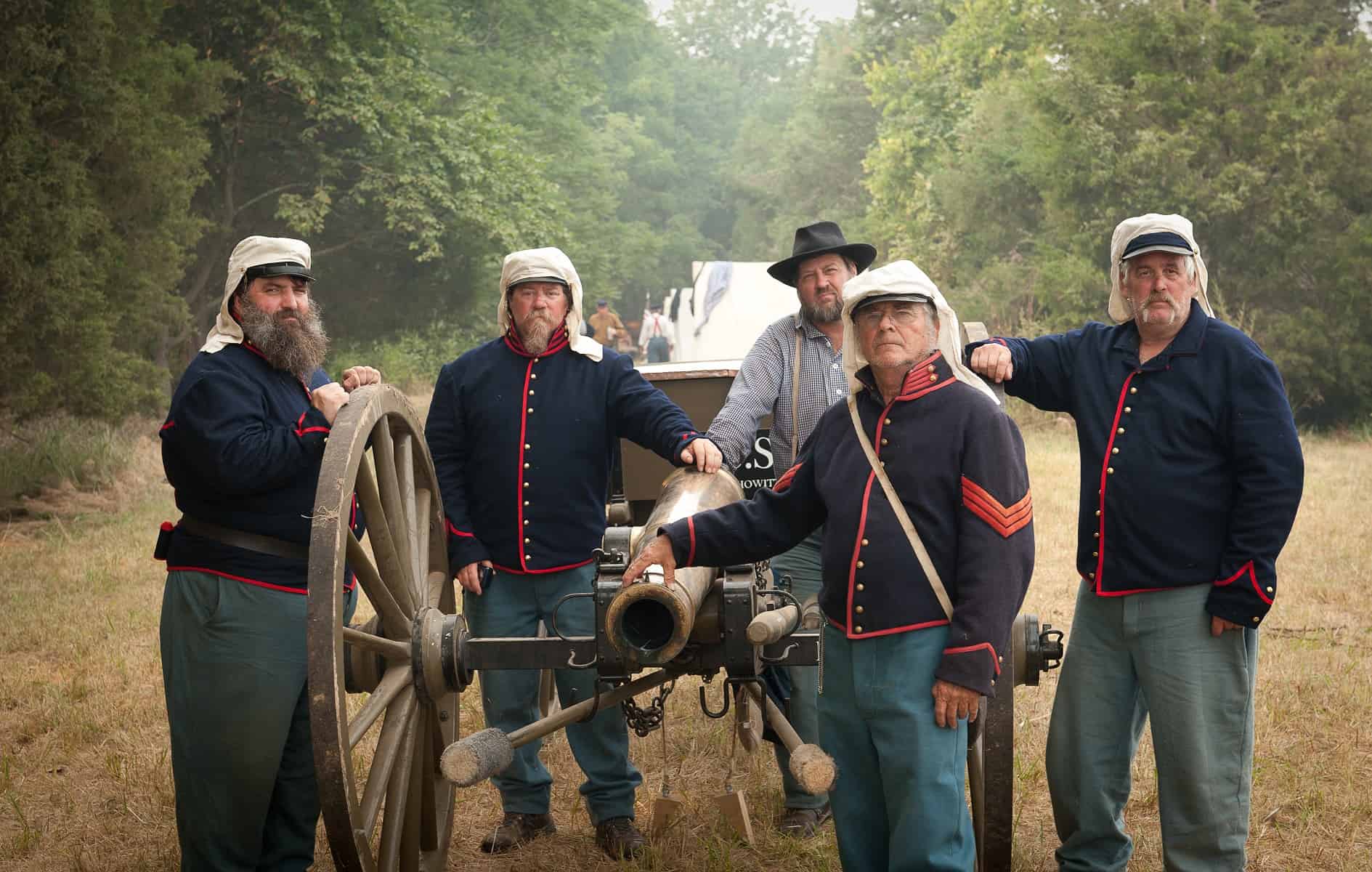Driving along Virginia’s winding northern roads, it’s difficult to truly imagine the bloodshed that took place 154 years ago at the First Battle of Bull Run. It was a violent clash that witnessed a loss of 847 lives and left 4,301 casualties injured or missing. Incredibly this is only one of many historic sites concentrated into what’s known as Virginia’s Cultural Region. A trip to the region (which includes Arlington, Alexandrea, Fairfax County, Loudoun County, and Prince William and Manassas) draws visitors into the epicentre a young, turbulent United States. It’s an exciting and storied tale of revolutionaries, renegades and national heroes that ultimately shaped the nation we call ‘neighbour.’ With few places in the country able to lay claim to such a high concentration of historic sites, stately heritage buildings and civil war relics, visitors will find no shortage of cultural wonders to stand transfixed by.
Mount Vernon
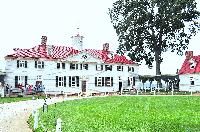 https://www.flickr.com/photos/airlines470/
https://www.flickr.com/photos/airlines470/
George Washington's Historic Estate
Once a vibrant plantation in the 18th century, today Mount Vernon is an American landmark and serves as the enduring reminder of the life and legacy left behind by Founding Father and First President of the United States, George Washington. The estate is no longer a plantation but showcases George Washington's mansion, authentically restored to its 18th century decor, lush gardens, intriguing museum exhibits and plays host to immersive programs. While it is a thrill to tour the well-manicured grounds and the outbuildings that helped keep a bustling plantation fueled, the mansion is the real showpiece of Mount Vernon. After Washington took ownership of the mansion in 1754, he enlarged the mansion into the glorious dwelling we see today. The First President of the United States personally supervised each renovation down to the design, construction and decoration of the mansion - even during the Revolutionary War.
Gadsby's Tavern Museum
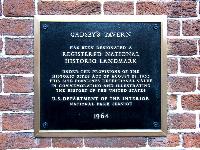 https://www.flickr.com/photos/nostri-imago/
https://www.flickr.com/photos/nostri-imago/
The Presidential Pub
Although Gadsby's Tavern was not the first tavern in Alexandria, it has become the city's most famous. The tavern originally opened in 1785 with the attached hotel built in 1792, but it wasn't until it was leased by John Gadsby in 1796 that it became a hub for political, business and social discourse in Alexandria. Gadsby's Tavern is most famous in antiquity for hosting famous patrons including presidential names like John Adams, Thomas Jefferson, James Madison, James Monroe and George Washington who were all frequent guests in this important Virginia city.
Today, visitors can visit the 18th-century tavern and hotel building to take a step back in time and learn about the social customs, food and clothing from days long past. The City Hotel Building holds a restaurant surrounded by historic artifacts, while the tavern is the frequent host of historical-themed events such as Tea with Martha Washington and Lafayette Ball Dance Classes.
Manassas National Battlefield Park
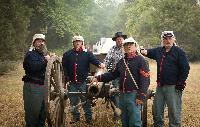 Virginia.org
Virginia.org
Site of the First Battle of the American Civil War
The Manassas National Battlefield Park in Manassas, Virginia was the site of two equally important battles in the American Civil War where Southern troops tested Northern resolve. The first battle, known as the First Battle of Bull Run, was the first major battle of the Civil War where poorly trained and positioned troops on both side swept away the notion of a quick war in one bloody clash. The Second Battle of Bull Run took place a year later, serving as the victory for the South that would convince General Robert E. Lee to push north into Union territory. Today, this site of so much spilt blood serves as a 2,000 hectare classroom where visitors can enjoy ranger-conducted programs and self-guided tours of the historic grounds and the exhibits within the museum in the Henry Hill Visitors Centre. Additionally, because the surrounding area of Prince William County is becoming increasingly urbanized, the Manassas National Battlefield Park serves an oasis for plants and animals as one of the most unspoiled areas in the Culpeper Basin.
Morven Park
Estate of Virginia's Most Influential Governor
Morven Park was purchased in 1903 by Westmoreland Davis and his wife Marguerite, but it wasn't until 1967, well after the death of both Mr. and Mrs. Davis, that the Westmoreland Davis Foundation opened it to the public to ensure the work and ideals of the man would live on. When Davis purchased Morven Park, he left behind his successful career as a lawyer to begin life anew as a farmer. As an advocate of progressive agriculture, he grew close to the farming community in Northern Virginia and would eventually be encouraged to run for governor. During his four-year term, Davis passed a number of reforms in Virginia that improved rural schools, roads, created farmer's cooperatives and enforced inspections and licensing requirements that vastly improved food safety.
Today, visitors can explore the 400 hectares that not only preserve the abundant wildlife and pastoral beauty of the grounds, but showcase the beautiful Greek Revival mansion that has been repurposed into a memorial to Westmoreland Davis. The mansion was originally a tiny fieldstone farmhouse before Governor Davis transformed it into the magnificent piece of architecture it is today. The mansion not only features an extensive entry hall, wood-paneled billiard room and formal dining room, but it is also home to the Museum of Hounds & Hunting of North America and the Winmill Carriage Museum outside. Visitors can also tour the estate’s athletic fields, equestrian centre or the trails running through the grounds, established by the Loudoun Wildlife Conservancy, an estate partner.
George Washington Masonic National Memorial
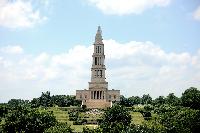 https://www.flickr.com/photos/larrison/
https://www.flickr.com/photos/larrison/
Exemplification of George Washington and the Freemasons
The George Washington Masonic National Memorial is a marvel of marble that looks as though it would be right at home among the buildings in Washington, D.C. This neoclassical monument in Alexandrea was funded and built by the Freemasons in honour of its namesake George Washington, a member of the Freemasons himself, who exemplified the character and virtues of a true Masonic brother. Today, the magnificent structure is not only a tourist attraction, but also a library, research centre, community centre, concert hall and meeting site for not only Masonic lodges but a number of community organizations in Alexandria. Spread throughout the ten-story shrine are fascinating artifacts such as George Washington's Clock of Death, a motorized Shriner parade and an ornately decorated replica of the Ark of the Covenant hidden away in the fake treasure room.
Marine Corps War Memorial
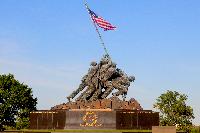 https://www.flickr.com/photos/usapatriotism/
https://www.flickr.com/photos/usapatriotism/
In Memoriam to Fallen Servicemen
"Uncommon Valor Was A Common Virtue." This is what visitors will read on the west side of the Marine Corps War Memorial, a slab of cut granite topped with the affecting image six men raising the American flag during the Battle of Iwo Jima in World War II. While there are many memorials that both feature this image and serve to honour fallen Marines in all wars, this monument that sits just outside of Rosslyn, Virginia is the first. The memorial is uniquely situated on Arlington Ridge in such a way that it sits on the axis of the National Mall, providing a panorama of the Lincoln Memorial, Washington Monument and the Capitol Building across the border in Washington, D.C.
Have you ever explored the cultural
sites in Virginia's Cultural Region?
Leave us a comment below!


